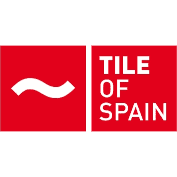When someone asks me why I still attend trade shows for natural stone, I always offer one word: Variety. There’s something about seeing different types of stone – along with other materials – in formats larger than 4′ X 4′ squares that shows the dynamics and possibilities for use.
There’s also the chance to see something new, with the trouping of the aisles at industry event revealing everything from sensational design ideas to topless artists cavorting in front of marble and granite slabs.
Got your attention there with that last item? Admittedly, it’s unlikely you’ll see it at Coverings in Orlando this April… but, then again, surprise is part of variety.
Trade events often get the tag of being passé in today’s age, and that it’s easy to see everything through the online media you’re using to read this. The trick, though, comes with attempting to sift through the millions of references to, say, granite, in a typical web search and pick out something relevant to the right color and movement for a new project.
The Internet offers more chaos than choice overall, and samples still tend to be in the 1′ X 1′ representations that offer little for comparison. Domestic distributors and suppliers almost always do their best in offering a wide selection when visiting a showroom or stoneyard, but there’s only so much material they can handle and perennial favorites (i.e., the stuff that sells best) gets top treatment.
That’s where stone trade events make the difference. Quarries and stone factories (and, in the case of Coverings, ceramic-tile manufacturers) worldwide need a place to get their products in the wholesale supply channel. The happy by-product for architects, designers, fabricators and retail shops is a giant real-time catalog for discovering and sourcing new materials.
For those seeking the ultimate in stone, for example, the centerpost is Marmomacc, where the multitudes converge every fall in Verona, Italy. It’s a pilgrimage that anyone involved with stone should make once, with exhibitors from more than 60 countries offering any dimensional product taken from a quarry.
If Marmomacc suffers from a problem, it’s one of excessive choice. Last year’s event included 11 exhibit halls and four outdoor display areas, giving attendees 823,180 ft² to take in through four days. In a rough comparison, it’s a show two-and-a-half times the size of Coverings.
Shows such as Coverings, though, offer a big advantage with their smaller, more-focused exhibit floor. For one thing, there’s less repetition of stone types. What’s shown at Coverings is also easily available in the United States, so you won’t get your mind set on a particular travertine that might be difficult to obtain from, say, a company based in Teheran.
Despite the economic downturn here, the United States still remains a key market for stone quarriers. U.S. imports of dimensional stone overall ranks second only to China worldwide, and we’re easily the top end-users of stone. If someone really wants to sell, they’ll be at Coverings.
Attendees won’t see everything in stone and allied materials. (For reasons only known amongst themselves, quartz-surfaces manufacturers jointly skip U.S. stone-related events, although this isn’t the case at other international venues.) But, they’ll find an impressive panoply of hard-surface goods and get the edge on what’s new and different.
Emerson Schwartzkopf is editor/publisher of Stone Update, an online news service for the stone and hard-surfaces industry. He can be reached at [email protected].






